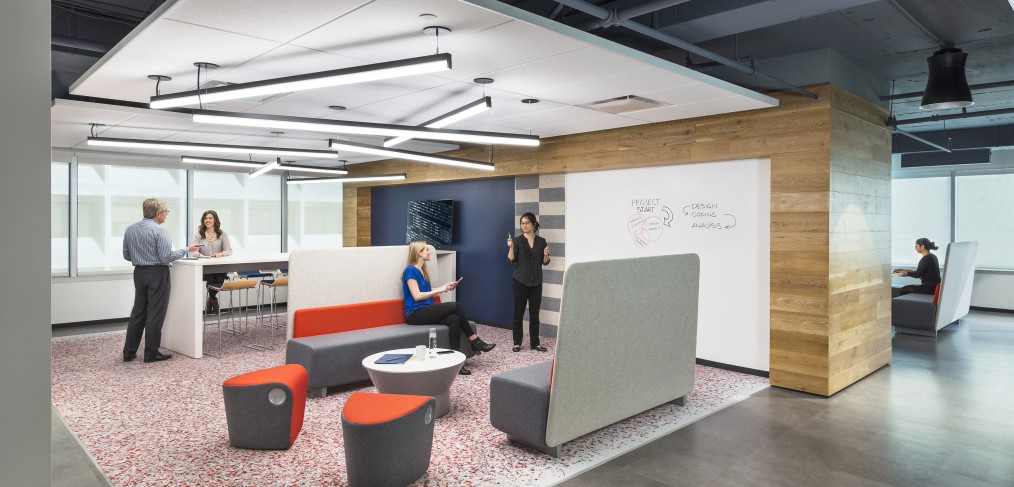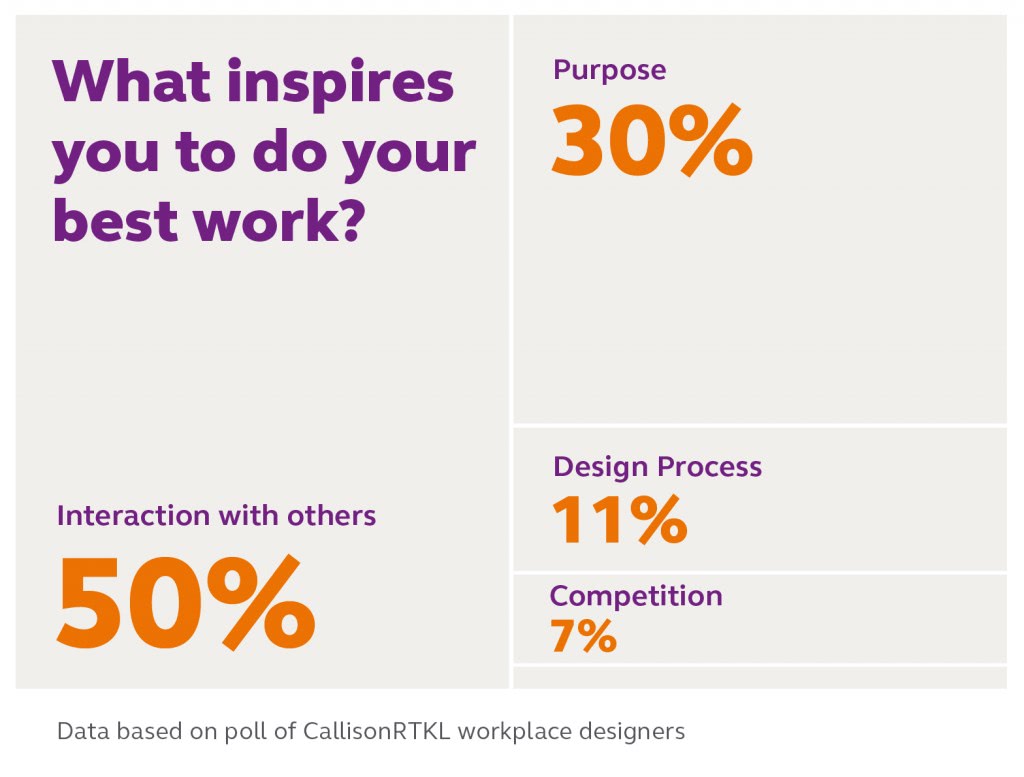
The Density-Driven Workplace
CallisonRTKL’s Kirill Pivovarov explores how densification can lead to increased productivity and innovation in the workplace.
Companies all over the world are facing the same question: How can we increase workforce productivity and innovation output while reducing the cost of doing business?
As designers, our answers usually focus on reducing real estate footprints, densification and mobility strategies. In terms of quantifying these strategies, it’s fairly easy to measure a reduction in workplace operating costs, but it is somewhat more challenging to put numbers to the less tangible ideas of productivity and innovation, particularly in creative industries.
Nevertheless, we know that measuring these things is important to the process of improving workplaces around the world and we were prepared to use our own team to prove it. We recently conducted a poll among 50 CallisonRTKL workplace designers in Washington, D.C. Designers of all levels, from entry level to leadership positions, answered the same question: What inspires you to do your best work?
Despite different working styles, roles and years of experience, the number one answer was that interacting with other people inspires their best work, followed by purpose, design process and finally, competition.

The Social Network
Experts across the design field have written about employee well-being and the benefits of a flexible, healthy workplace. These issues are incredibly important because they focus on designing environments with the intent to support human activity. Productivity, on the other hand, is not a direct measure of workplace quality or efficiency; it is a measure of human activity and social interactions that generate ideas, innovation, wealth and other positive socio-economic results. Equally, it can be a measure of conflicts which, if not resolved or managed, can lead to destruction of social networks, decline of productivity and shrinking corporate profits.
To understand human productivity in a knowledge-based workplace environment, we need to understand how we form social networks. Two recent studies (second study here) published by scientists at the Santa Fe Institute described an emerging theory of adaptive complex systems and networks. The theory describes cities as drivers of human civilization and engines of innovation.
The researchers state that despite differences in appearance and governance, the modern metropolis functions in the same way as ancient human settlements and follows a simple rule: If the population of any city doubles, the average amount of positive socio-economic product (wealth, innovation, etc.) and negative socio-economic product (crime, health hazards, etc.) both go up by 15%.
Thus, more human interactions taking place in a shorter time period inside a limited area automatically results in increased socio-economic product. Could the same principle apply to the workplace?
Of course there are notable differences between cities and corporate workplaces. For one, the flexibility of organic self-organization in a city is much higher than in a typical corporate environment. Nonetheless, any business at its core is a social network. When we scale the model of an urban environment down to the scale of the office space, densification still translates into increased positive and negative human interactions.
Negatives can be balanced by self-organizing social networks or by infrastructure networks (the built environment, corporate structure, laws, technology, etc.), as well as “natural infrastructure” (the natural environment, air quality, access to natural light, etc.). And this is where design professionals can bring true value to their clients, by designing environments that support exceptional social networks, focusing on spaces that balance open floor plans with privacy considerations, amenity spaces and integrated technology.
In the end, when densification-driven design of physical spaces encourages positive cultural transformation, it can also reduce the number of negative social workplace experiences, leading to increased productivity and innovation.
